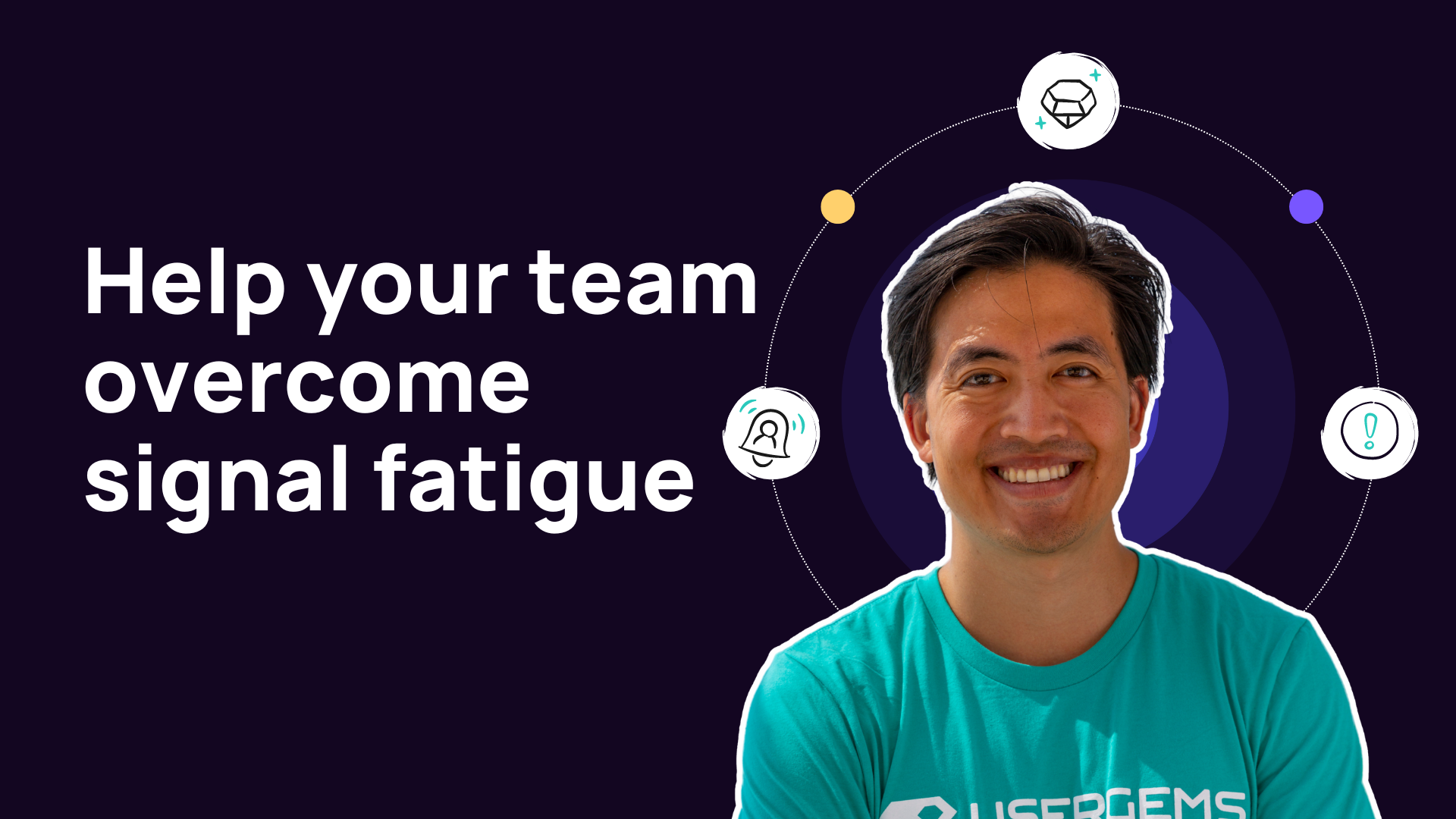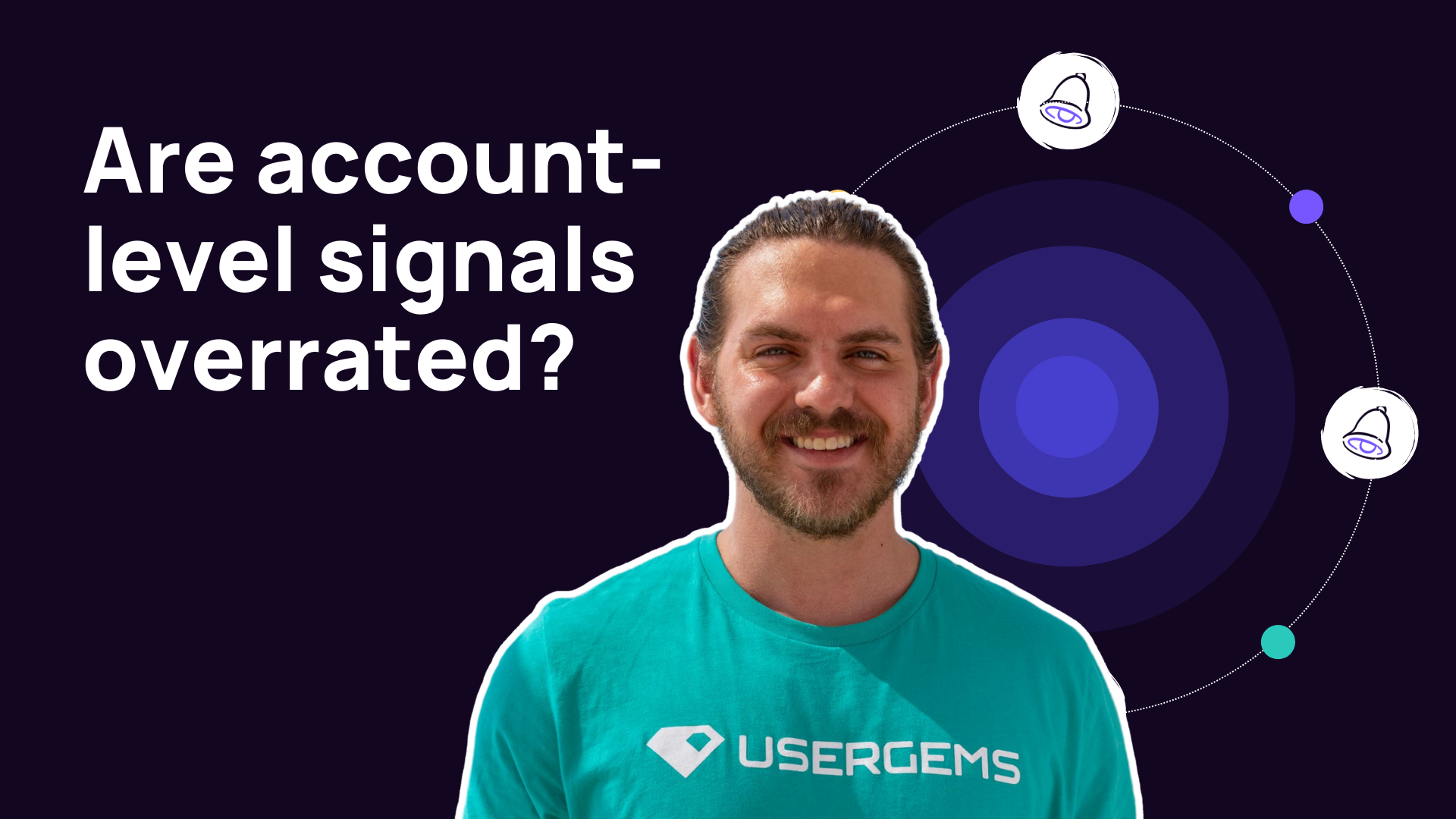.png)
Outbound sales have hit the wall. Hitting your targets every month has become a major challenge:
- The length of sales cycles has gone up
- The average contract value has gone down,
- The number of stakeholders involved in the buying process has increased
A few years ago, sales reps could use FOMO (a.k.a. the fear of missing out) to convert indecisive buyers faster. Today’s B2B buyers are more risk-averse. Driven by FOMU (fear of messing up), they create an increasingly complex buying process with many requirements, stakeholders, and steps.
We'd have been in the same boat if it weren't for our adoption of signal-based selling. Instead of chasing leads, we track buying signals from our most valuable buyers. An automated sequence kicks off whenever a significant change happens in our target customer profile. The exact action plan varies depending on the situation, but the outcome is always the same: a pipeline filled with warm leads who are far more likely to convert.
This framework has contributed 25% of our annual pipeline and 37% of UserGems' annual revenue. Use our framework to set up signal-based go-to-market programs that get similar results.
Relationship signals you need to know
Over 51 percent of buyers rely on their own prior experience with the vendor when they make a purchasing decision. The trend takes its roots from FOMU — buyers would rather go with someone they know and trust than build a relationship from scratch.

Couple this information with the fact that 20% to 30% of Millenials change jobs every year, and you get a recipe for success: all you need is to maintain relationships with your champions after they transition to a new role or company. As simple as that.
It’s not that straightforward, though (you must have seen it coming). Tracking your champions builds a powerful pipeline, but many more people know your product deeply. These admins, power users, and prospects can still influence a deal.
To keep your pipeline filled with the warmest and most qualified leads, track these buying signals
Champion job changes. When a key contact within your target account changes a role or organization, it signals a potential opportunity. If you use it right, you’ll get a hot lead who doesn’t need much convincing and is ready to advocate for you in their new organization.
User job changes. Think happy customers, like end users and trial users. They might not have been involved in the sales opportunity, but they know your product and might have developed an affinity for it. If you have NPS scores and product usage data, use these to segment out the happiest users and monitor them as they move on. They may eventually become a decision maker at their next organization, or they can help your sales team build a groundswell for their buyers.
Prospect job movements. As the sales cycle gets longer, you’ve seen many champions leave in the middle of the opportunity. Even though they haven’t purchased yet, they’re already at the bottom of the funnel compared to your average lead. And don’t forget about closed lost opportunities! The fact they didn’t buy your product at the last organization doesn’t mean it’s not a good fit for their next role.
New hires & promotions. If a target company hires a new employee who fits the persona you’re selling to, you should have your finger on the pulse. With new hires, especially for executive-level positions, organizations often look to undergo a significant change. If you approach them with a timely outreach sequence, you may land a new client faster than usual.
Relationship signals = An easier signal to action
Even the most well-thought-out frameworks don’t make sense if you can’t act on them. Here’s how to identify the most relevant signals for your business and create actionable playbooks for each.
How to maximize the success of signals
Not every signal is a valuable buying signal — filter your inputs to surface only the most relevant outputs (aka buying signals).
Run each change against your ideal customer profile (ICP) or target persona criteria before turning it into an opportunity:
- If a champion, user, or prospect moves to a different organization, does this organization fit your ICP?
- If a new person joins your ICP account, does this person match your target persona?
When you’ve set up the parameters, you’re ready to put them into use.
How to make signals actionable
Who should use these change signals? What do they need to do?
The final step is making it easy for your teams to act on job change signals. Create aligned playbooks (ideally powered by automation) that benefit the entire revenue team’s pipeline generation, deal acceleration, and churn prevention goals.
3 examples of end-to-end buying signal workflows
1. SDR — automatically add change-job leads to sequences
The #1 reason to love signal-based workflows is that they reduce your SDRs’ manual tasks. Knowing who exactly to reach out to and what to say, your sales team and SDRs won’t have to spend time sifting through the leads. All they need to do is act on the signal.
That’s why I highly recommend that SDR teams use automation to monitor champions and assign them to sequences without manual intervention. We use six different sequences based on the contact's role and situation. So whenever a lead changes a job, they’re automatically added to a sequence tailored for this specific scenario.
This saves SDRs valuable time, improves personalization, and boosts reply rates.

Tip: SDR outreach should never start with To show you've done your research, congratulate them on their role, include helpful information, or offer a gift tailored to their specific situation to show you've done your research.
2. AE — Set up alerts and check with your champions AND end-users early
Moving down to the middle of the funnel and right to AE’s world. Your AEs need to keep a close eye on your champions and end users to push deals forward. You can set up automatic alerts on Slack or use a dedicated champion tracking tool like UserGems.
When an AE receives an alert, they can reach out to someone with a relevant message. If the lead has just joined a new organization, they can open a conversation by asking about their experience with your company.
3. CSM: Auto-trigger churn prevention playbooks into your CSM system
CSMs know that champion departures present a churn risk but might not think about the risk of new executives joining the account. Their first task may be evaluating every tool that they inherit. By reaching out in the first month, you can fortify your standing and influence the new exec’s decision-making process.
So whenever there’s a personnel change in your customer account, your signal-based program should automatically alert your CSM and trigger a churn prevention playbook.
How to operationalize a signal-based program (the sustainable way)
Implement your signal-based program step by step, week by week. It will take months to set up a functioning system that works on all levels: SDR, AE, and CS. But the wait is well worth it — relationship signals help our small team with limited resources to generate pipeline on autopilot without breaking a sweat.
Here’s how you can operationalize it in your organization:
1. Build one play at a time.
The first few weeks is where you:
- gather all the stakeholders;
- define signals for your marketing team and SDR (that’s enough for starters) and how to filter them;
- and prioritize tasks.
Wait for 2–3 weeks before setting up the next signal.

2. Crawl -> walk -> run
Get buy-in from other stakeholders as you start seeing your first signal-based opportunities being created. Add more signals every several weeks and involve the rest of the revenue team in the creation and execution of signal-based programs.
3. Assess the impact of a signal-based program on your pipeline.
At UserGems, we’ve been using our own tool to monitor champions’ job changes. By identifying key buying signals, UserGems helps us spot opportunities when they’re most timely and automate the next actions. The program has contributed at least 12 percent to 16 percent of our pipeline every quarter.
Let your pipeline grow alongside the career journeys of your champions
Relationship-based signals are an untapped B2B pipeline generation strategy that could add +10% to your pipeline and make your life easier this year.
Where should you start? You can’t easily track your leads’ and customers’ career journeys manually, so your first step is to implement a system that automates the entire process.
Operationalize your signal-based program with UserGems. The platform monitors changes in your accounts and immediately triggers playbooks directly in your CRM or CSM software. Book a demo to learn more.




.svg)
